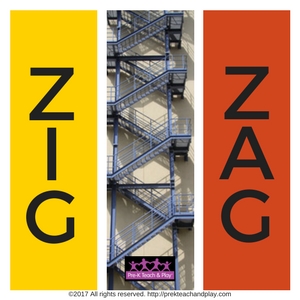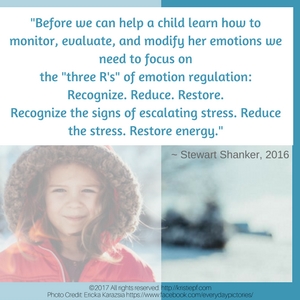
Do you know how to use the seven progressions of the zigzag process to be a strong play partner and help reduce children’s exposure to stressors?
An effective play partner is someone who fosters strong relationships and gets neurons to fire. And as Dan Siegel and other neuroscientists remind us, “neurons that fire together, wire together.” To foster strong relationships, play partners match their pace and expectations with the child’s pace and expectations, guide a child’s actions and attention, and instill curiosity and a sense of joy during daily interactions.
An effective play partner is also someone who is able to scaffold and support, know when to pause and when to prompt, and how to read a child’s cues.
Lastly, an effective play partner understands why a child may be struggling or why development has stalled. This means, after gathering and documenting clues about a child’s development and learning, play partners work to identify the underlying issue or concern so they can take the correct action.
In an earlier Pre-K Teach and Play podcast (click here), I introduced seven developmental progressions which can help guide play partners, particularly when children are struggling. Further, I introduced an image, which illustrates the “zigzag process”.
Interested in an example of how to use the “zigzag process” to promote children’s interaction with objects? Click here for a quick video explanation.
The “zigzag process”, while useful for play partners to analyze patterns and trends, can also be useful for identifying and reducing children’s exposure to early childhood stressors.
 NOTE: ECE Solutionary Members, you are invited to watch a five-minute video where I explain the impact of stressors on early development and learning. Click here to login to the Members Only Library. Then search using the keywords “early childhood stressors” or look for this image. Not yet a member? Click here to join today.
NOTE: ECE Solutionary Members, you are invited to watch a five-minute video where I explain the impact of stressors on early development and learning. Click here to login to the Members Only Library. Then search using the keywords “early childhood stressors” or look for this image. Not yet a member? Click here to join today.
Being aware of the stressors children experience, helps play partners reframe the notion of “managing” challenging behaviors. They begin to see that a child is not “acting out”, rather they see a child’s body responding to stress.
Here are three simple steps to take, using the “zigzag process”, to reduce the stressors a child may be experiencing:
Steps:
- Carefully consider which stressors a child may be experiencing. For example, consider whether they have to deal with the strong emotions of others (adults and peers), are they expected to participate in large group activities, which may feel overcrowded, less personalized, and less responsive to their needs, or are their senses being continually inundated? NOTE: ECE Solutionary Members can view a complete list of early childhood stressors, accessible in the Members Only Library. Click here to access “Resources for Addressing EC Stressors for ECE Solutionary Members”.
- Consider when expectations fall too heavily on the right hand side of the zigzag image. In other words, when expectations are multiple, complex, abstract, specific, unfamiliar, unpreferred, and involve others.
- Then, as possible, “zigzag” from the right side of the image to the left. For example, if something is complex, aim to make it simple. If something is abstract, aim to make it concrete. And if something is unpreferred, aim to build upon a child’s preferences.
Following these three simple steps will allow play partners to reduce the stressors a child is experiencing and allow the child to remain in a state of optimal learning and development.